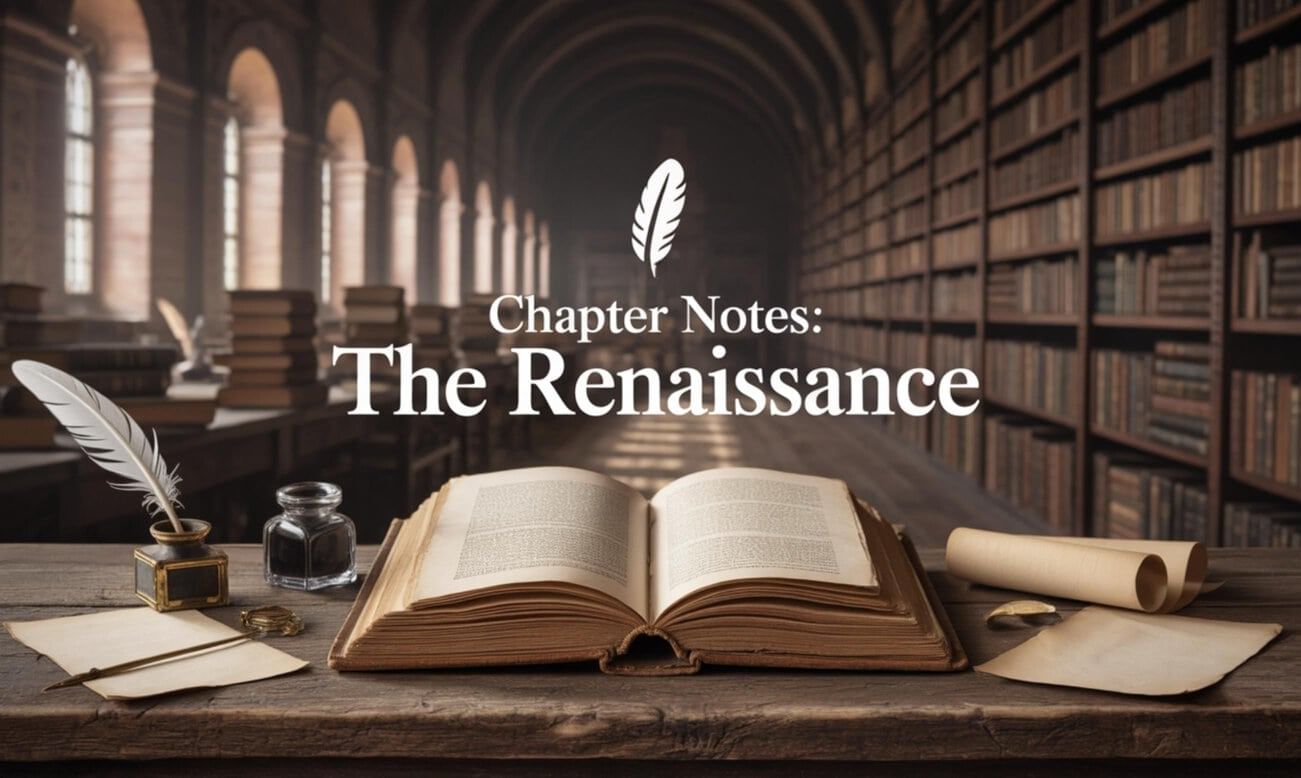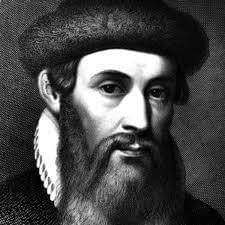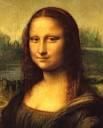The Renaissance Chapter Notes | History Class 9 ICSE PDF Download
| Table of contents |

|
| Introduction |

|
| Causes Leading to the Beginning of the Renaissance |

|
| Principles of the Renaissance |

|
| Beginning of the Renaissance |

|
| Impact of the Renaissance |

|
| Consequences of the Renaissance |

|

Introduction
The term "Renaissance" means rebirth or revival. It was a transformative period in European history that lasted from the 14th to the 17th century. This era marked a shift from medieval traditions to a focus on rational thinking, individualism, and humanism. The Renaissance witnessed remarkable progress in literature, art, architecture, science, and technology, laying the foundation for the modern age in Europe.
Causes Leading to the Beginning of the Renaissance
Fall of Constantinople
- In 1453 CE, the capture of Constantinople by the Turks prompted Greek scholars to migrate to Italy and other European countries, bringing with them rare Roman and Greek manuscripts.
- This influx of knowledge transformed Rome into a centre of Greek culture.
- The study of Greek and Roman philosophy, science, art, and literature began, laying the groundwork for the Renaissance.
Decline of Feudalism
- Feudalism was a political system in which kings granted lands to nobles, such as dukes and earls, in exchange for military service.
- As feudal lords controlled land and peasants, this structure limited social mobility and progress.
- The decline of feudalism in the 13 th and 14 th centuries coincided with the rise of a wealthy merchant class, fostering an environment of free thinking and new learning.
New Trade Routes
- Portugal and Spain led geographical explorations, discovering new routes.
- Turks’ capture of Constantinople closed land routes between the West and the East.
- European traders sought new sea routes to Asia and Africa.
Key discoveries:
- Bartholomew Diaz reached the Cape of Good Hope.
- Columbus discovered America in 1492.
- Vasco da Gama reached Calicut, India, in 1498.
- Ferdinand Magellan circumnavigated the globe.
New routes boosted trade and inspired adventure.
Spirit of Enquiry
- The Medieval Church dominated, enforcing its theories; independent thinking was discouraged.
- Scholars began rejecting medieval ideas, questioning Church authority.
Factors fostering enquiry:
- Thinkers like Roger Bacon and Thomas Aquinas emphasised reasoning, urging people to think independently.
- Crusades (Christian-Muslim wars for the Holy Land) exposed Europeans to advanced Arab science, mathematics, and art.
- Scientific inventions: Galileo’s telescope, Copernicus’ proof that Earth orbits the Sun.
- Discoveries broadened perspectives, challenging Church-enforced beliefs.
Invention of the Printing Press
- The invention of the printing press by Johannes Gutenberg in the 15th century revolutionised the production of books.
- This technological advancement enabled the mass production of books and the translation of the Bible into various languages.
- The widespread availability of books encouraged people to question the beliefs of the Church, fostering a spirit of scientific inquiry and marking the beginning of the Renaissance.

Principles of the Renaissance
The Renaissance, a period of cultural revival in Europe, was guided by several key principles that emphasised human potential, inquiry, and the beauty of the human form.
Humanism:
- Humanism during the Renaissance was a shift in focus from religious and supernatural concerns to human beings and their potential.
- Humanists explored topics related to humans and nature, highlighting the importance of free expression, personal goals, and happiness for everyone.
- This movement also involved reviving classical texts and ideas from ancient Greece and Rome, emphasising their relevance to contemporary society.
Glorification of Human Form:
- Artists and scholars during the Renaissance celebrated the beauty and vitality of the human body.
- Even in religious paintings based on Biblical themes, the earthly human form was prominently displayed, reflecting the era's admiration for physicality.
Example: Humanism, a key principle of the Renaissance, shifted the focus from religious beliefs to the potential of humans, highlighting the revival of classical texts and Greco-Roman ideas, as shown in Leonardo da Vinci’s detailed anatomical sketches that celebrated the structure and function of the human body over spiritual themes.
Beginning of the Renaissance
Started in Italy, then spread across Europe.
Reasons for starting in Italy:
- Fall of Constantinople: The 1453 fall of Constantinople led Greek and Roman scholars, along with their manuscripts, to Italy, igniting a cultural revival.
- Roman Heritage: Italy's rich Roman heritage, with remnants of the Roman Empire, attracted scholars seeking classical knowledge.
- Wealth from Trade: Prosperity from trade with the East enabled Italian merchants to fund artists and writers, fostering the revival of classical culture.
- Exposure to Eastern Knowledge: The Crusades and exploration introduced Italians to Eastern knowledge, stimulating curiosity and a spirit of exploration.
Impact of the Renaissance
The Renaissance profoundly influenced various fields, including art, literature, philosophy, science, and religion.
Art
The Renaissance revitalised art, architecture, and sculpture. Artists during this period employed new methods such as oil colours, frescoes, and woodcuts. They also studied human anatomy to portray realistic gestures and expressions.
Painting
Painters adopted humanistic, secular approaches, creating masterpieces.

Key painters:
- Leonardo da Vinci (1452–1519):. painter, musician, and scientist known for works like the Virgin of the Rocks, The Last Supper, and the Mona Lisa.
- Michelangelo (1475–1564): An exceptional painter, sculptor, architect, and poet who created the Sistine Chapel ceiling frescoes and designed St. Peter’s Cathedral. Famous works include The Last Judgement and The Fall of Man.
- Raphael (1483–1520): Notable for the Sistine Madonna and his contributions to the design of St. Peter’s Cathedral.
Sculpture
- Donatello: First major Renaissance sculptor, created the bronze statue of David.
- Lorenzo Ghiberti: Made two pairs of bronze doors for the Florence Baptistery.
- Michelangelo: Sculpted David (Florence), Moses (Rome), and the Pieta (Rome).
- Italian sculptors worked for Popes and wealthy merchants, decorating churches and homes.
- Later invited to England, France, and Spain, spreading Renaissance art.
Literature
Used local languages, focused on humanist themes.
Italy:
- Machiavelli: Authored The Prince, a political treatise.
- Dante: Penned the Divine Comedy, a profound exploration of the human soul's journey.
- Petrarch: Known for his sonnets and lyrical poetry, he is often called the "Father of Humanism."
England:
- Geoffrey Chaucer: Celebrated as the "Father of English Literature," he wrote The Canterbury Tales, a collection of stories reflecting diverse medieval society.
- Thomas More: Wrote Utopia, a work discussing an ideal society.
- Other prominent writers included Francis Bacon, William Shakespeare, Ben Jonson, and Christopher Marlowe, each contributing significantly to English literature.
Germany: Martin Luther played a crucial role in the Reformation by translating the Bible into German, making it accessible to a broader audience.
Spain: Miguel de Cervantes wrote Don Quixote, a novel exploring themes of reality and illusion.
France: Writers like Michel de Montaigne and François Rabelais were influential during a literary golden age, contributing to the richness of French literature.
Science
The Scientific Revolution marked the beginning of modern science, emphasising the importance of observation and experimentation over the traditional theories upheld by the Church. This shift laid the groundwork for significant advancements in various fields, including astronomy, medical sciences, and mathematics.
Astronomy
- John Kepler: Demonstrated that planets orbit the Sun in elliptical, rather than circular, paths.
- Galileo Galilei: Pioneered the use of the telescope to observe celestial bodies, significantly enhancing our understanding of the cosmos.
- Isaac Newton: Formulated the law of universal gravitation, explaining the force of gravity and its role in the motion of celestial bodies.
Medical Sciences
- William Harvey: Discovered the circulation of blood, detailing how it moves from the heart to the body and back.
- Paracelsus: Established the connection between medicine and chemistry, highlighting the role of chemical processes in healing.
- Valerius Cordus: Synthesised ether from alcohol and sulphuric acid, contributing to the field of organic chemistry.
- Jan Baptist van Helmont: Identified carbon dioxide, advancing the understanding of gases and their properties.
Mathematics
- The introduction of algebra and Indian numerals to the Western world by Arab scholars significantly advanced mathematical practices.
- Simon Stevin: Advocated for the standardisation of coins, weights, and measures, facilitating trade and commerce.
Consequences of the Renaissance
- The Renaissance sparked the Reformation in Europe, particularly fueled by Martin Luther's Protestant Reformation in the early 16th century. This movement prompted people to question Church teachings and criticise rituals, leading to the division between Catholics and Protestants.
- It shifted the emphasis from spirituality to humanism, placing humans at the centre of scholarly pursuits.
- The Renaissance encouraged a scientific perspective and rationalism, prioritising theories based on observation and evidence.
- It weakened the authority of the Church and feudalism, while strengthening the power of central monarchies across Europe.
- The period also gave rise to new styles in painting, art, sculpture, and architecture, marking a significant evolution in creative expression.
- The decline of feudalism, coupled with the Renaissance, facilitated the emergence of a middle class comprising merchants, traders, and affluent peasants.
- It fostered nationalism and the development of national literature, contributing to the formation of modern nation-states.
- The discovery of new sea routes following the fall of Constantinople in 1453 enhanced East-West trade, significantly boosting European prosperity.
|
14 videos|59 docs|16 tests
|
FAQs on The Renaissance Chapter Notes - History Class 9 ICSE
| 1. What were the main causes that led to the beginning of the Renaissance? |  |
| 2. What are the key principles of the Renaissance? |  |
| 3. When did the Renaissance begin, and where did it originate? |  |
| 4. What impact did the Renaissance have on art and literature? |  |
| 5. What were some of the consequences of the Renaissance on European society? |  |




















